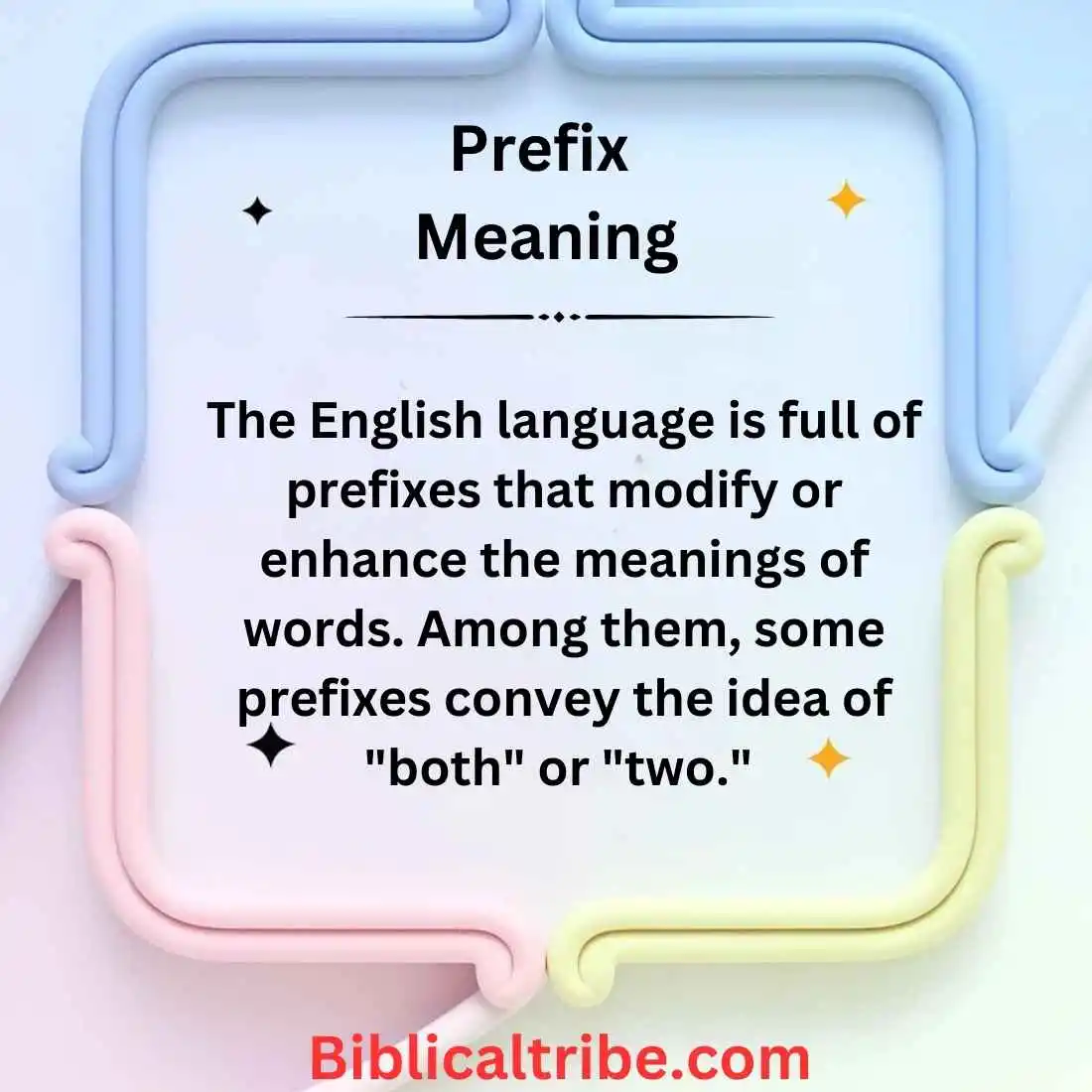Last Updated on February 12, 2025 by Ethan Richards
The English language is full of prefixes that modify or enhance the meanings of words. Among them, some prefixes convey the idea of “both” or “two.”
Understanding these prefixes can improve vocabulary, comprehension, and communication skills.
This article explores various prefixes that mean “both,” their uses in words, and how they apply in different contexts.
Common Prefixes That Mean “Both”
Ambi-
The prefix “ambi-” is derived from the Latin word ambo, meaning “both.” It signifies duality or something applicable to two sides.
Examples:
- Ambidextrous – Able to use both hands equally well.
- Ambivalent – Having mixed or contradictory feelings.
- Ambiguous – Open to multiple interpretations.
Bi-
While “bi-” primarily means “two,” it is often used in contexts where both aspects of something are considered.
Examples:
- Bilateral – Involving two sides.
- Bilingual – Speaking two languages.
- Bipartisan – Supported by two political parties.
Di-
Originating from Greek, “di-” conveys the meaning of “two” or “double.”
Examples:
- Dioxide – A molecule with two oxygen atoms.
- Dichotomy – A division between two opposing parts.
- Diplomatic – Involving two groups or nations.
Alternative Ways to Express “Both” in Different Contexts
Sometimes, using a prefix isn’t the best option. Here are different ways to convey “both” in various settings.
Polite and Professional Alternatives
In formal writing or workplace communication, clarity is essential. Here are some refined ways to express “both”:
- Mutually inclusive – “These proposals are mutually inclusive.”
- Dual perspective – “We should consider a dual perspective.”
- Equally applicable – “The guidelines are equally applicable to both departments.”
- Twofold – “This initiative has a twofold benefit.”
- Interdependent – “The two factors are interdependent.”
Casual and Conversational Alternatives
For everyday conversations, simpler phrasing works better.
- Both sides of the coin – “I see both sides of the coin in this argument.”
- Two-way street – “Respect is a two-way street.”
- Go hand in hand – “Happiness and health go hand in hand.”
- Double duty – “This jacket does double duty as casual and formal wear.”
- Cover all bases – “We need to cover all bases before making a decision.”
Choosing the Right Expression Based on Tone
Different contexts require different phrasing. Here’s a quick guide to choosing the best option:
| Context | Suggested Expression |
| Business Meeting | Bilateral approach |
| Academic Writing | Dichotomous nature |
| Friendly Chat | Two sides of the same coin |
| Political Discussion | Bipartisan support |
| Science | Dioxide formation |
Examples Using “Both”
Texting requires brevity while maintaining clarity. Here are some user-friendly and optimized examples:
- “I can meet at 3 or 5, both work for me!”
- “This jacket is good for both summer and winter!”
- “You can choose either method, both are effective.”
- “She’s bilingual, speaks both French and Spanish fluently.”
- “We have two options; both have pros and cons.”
- “I love both movies, can’t decide which to watch!”
- “That song is popular in both the U.S. and Canada.”
- “We should consider both perspectives before deciding.”
- “These shoes are stylish and comfortable—best of both worlds!”
- “I’m ambivalent about the decision, I see both sides.”
Conclusion
Understanding the different prefixes that mean “both” and their applications can enhance your vocabulary and communication skills.
Whether using “ambi-,” “bi-,” or “di-,” knowing when and how to use these prefixes allows for clearer and more effective expression.
By incorporating these words into daily conversations, writing, and professional settings, you can improve the precision and versatility of your language skills.
Would you like to practice using these words in sentences? Try writing a few and see how they enhance your communication!

Justin Taylor is a gifted storyteller and dream analyst who brings a fresh perspective to biblical dream interpretations. His engaging narratives and intuitive insights captivate readers, guiding them through the intricate tapestry of their subconscious mind.










